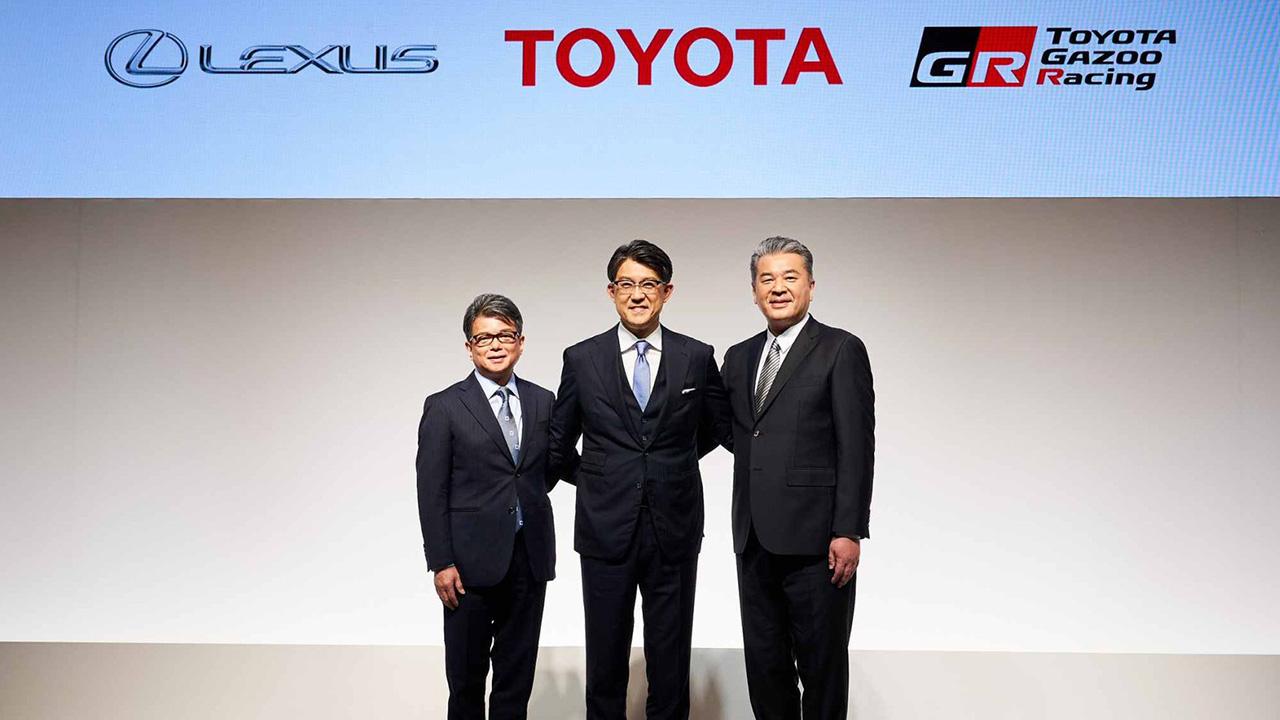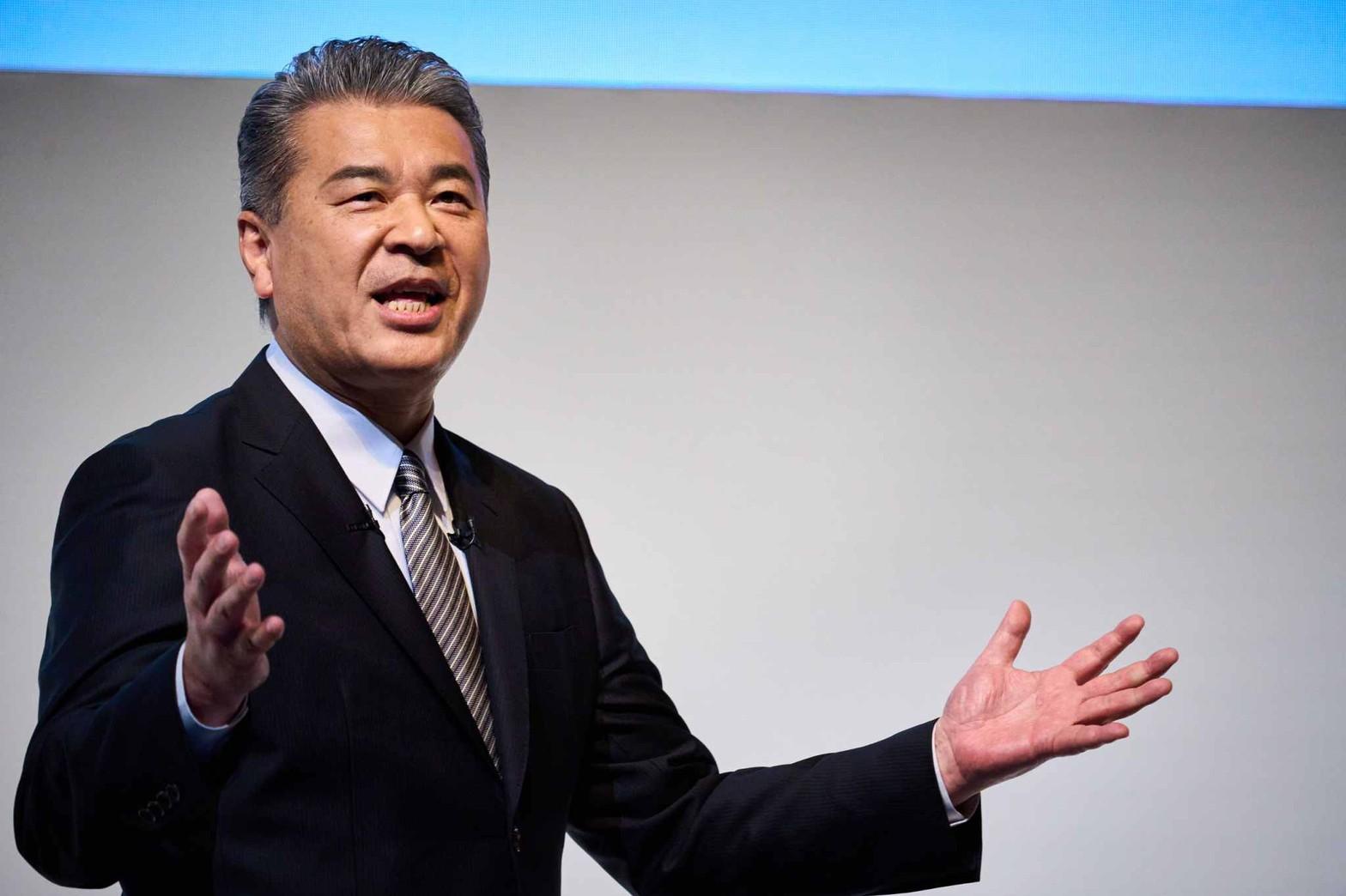
The eyes of the world were on a recent briefing about Toyota's new management structure. There, new President Koji Sato explained the journey of transformation into a mobility company.
Mistakes as a source of growth
From there, Vice President Nakajima explained the product-centered initiatives.
Vice President Nakajima

As chief engineer, I oversaw the development of the two cars pictured here. Working with many colleagues, we faced many challenges and enjoyed many great moments together.
I love that kind of car development.
At the same time, we made many mistakes. These became our flesh and blood, shaping who I am today.
The way I looked and approached my work even earned me the nickname Bulldozer. I believe that it is all the more important to pave the way forward,
at a time when the right answers are unknown, with this in mind, I would like to share my thoughts on our product-centered management.
Introducing 10 BEV models by 2026 to hit sales of 1.5 million units a year
Vice President Nakajima
Earlier, we heard about the Toyota Mobility Concept.
It is centered on enhancing the value of the car, expanding new mobility and freedom of movement, and providing new services and energy solutions as part of the social system.
I will explain the three approaches that hold the key to realizing this vision: electrification, intelligence, and diversification.
Let's start with electrification.
I want to begin by saying that we remain firmly committed to our multi-pathway approach.
We will continue to tailor electrification to the needs of customers and individual regions by drawing on the strengths and characteristics of each vehicle type.
Firstly, battery EVs. We will expand our current line up by releasing ten new models by 2026, which would amount to 1.5 million vehicles of annual sales.
We also have plans to release next-generation BEVs entirely different from those of today―BEVs created by carmakers in 2026. This new generation of BEVs will double driving range by using batteries with far greater efficiency, While also offering designs and driving performance to set hearts racing.
Setting up a dedicated BEV unit
Vice President Nakajima
We will also transform manufacturing.
Drawing on the strengths of our Toyota Production System, we will change the way we work to reduce the number of processes by half. This will entail a shift to more efficient lines, including autonomous inspections and unmanned transport powered by connected technology. We will completely transform the landscape of our production plants.
We also aim to achieve carbon neutrality at all of our global plants by 2035.
Also, we will overhaul existing supply chains by working with suppliers to procure superior quality parts at lower prices.
To realize these transformations, we are creating a new specialized unit.
Working under a single leader entrusted with full authority, this all-in-one team will handle every function, from development to production and business operation.
Supporting this is the competitiveness such as development intensity and in-house investment which haves been halved by the effect of TNGA. We will provide the team with comprehensive support through the power of our 10-million-strong sales and revenue base.
Mass-producing FCEVs with a commercial-vehicle focus
Vice President Nakajima
Next, plug-in hybrids.
By increasing battery efficiency to extend the EV-mode driving range beyond 200 km, We will reposition PHEVs as "the practical BEV" and will work harder on developing this as another BEV option.
For FCEVs, we will pursue mass production centered on commercial vehicles.
As indicated by the blue line on the left-hand graph, one feature of FCEVs is that the energy source, hydrogen, is lightweight, so even when traveling longer distances the vehicle is not as heavy as a battery EV, and less space is required.
Refueling is also much quicker. Taking advantage of these strengths, we will work with business operators to promote FCEVs by starting with commercial vehicles such as medium- to heavy-duty trucks.
Additionally, we have started basic research on hydrogen engines for heavy-duty commercial vehicles last year.
For hybrid EVs, we will continue to improve our products with a focus on high quality and affordable prices, by accounting for local energy conditions and customer ease of use.
We are also committed to becoming carbon-neutral with fuel options not only for new vehicles but also for vehicles already on the market which sum ups to 20 times more than the new vehicles.
Customizing the ride in next-generation BEVs
Vice President Nakajima
Next is Intelligence.
I will explain the role of intelligence in the cars themselves, the underlying services, and in expanding our connection to society.
First, the shift to intelligent cars.
This will involve expanding advanced safety technology, multimedia, and other constantly evolving feature updates to all of our vehicles. At the same time, alongside advances in the onboard operating system, our next-generation battery EVs will enable users to customize "ride feel" according to their preferences for how the vehicle runs, turns, and stops.
By also honing the vehicles' essential attributes, we will create cars that are more fun to drive in terms of both hardware and software.
Next is intelligent services.
This year, we will begin the public rollout of new services that connect cars to cities and infrastructure. For example, logistics systems that use real-time traffic information to boost transport efficiency, and systems that provide optimal energy management.
Partnering with cities and public facilities, we will also expand our battery EV charging network, while contributing to more effective energy use. These efforts are already underway at Lexus.
Then there is the role of intelligence in society.
Woven City, which we position it as our "mobility test course", will serve as a living laboratory for trialing various ways of connecting people, cars, and society.
For example, in the area of connected logistics services, we will use Woven City to address any issues that come to light through public trials, before once again implementing these services in society.
By repeating this process, we will accelerate the realization of intelligent societies.
Diversity of transportation and energy
Vice President Nakajima
Finally, we come to diversification.
I'll explain our approach to diversification, which goes beyond cars to mobility itself, and even the energy sector.
Firstly, the diversification of cars will involve expanding our product lineup, services that utilize connected technology, as well as parts, accessories, and business collaborations with new partners.
Next is the diversification of mobility.
For example, we have developed an easy-lock system for securing wheelchairs with a single motion, utilizing the know-how we have accumulated over many years of developing welfare vehicles. Sales of the system are planned to start this year, and we remain committed to ensuring stress-free travel for wheelchair users.
We will also expand our efforts to new mobility businesses, such as our collaboration with Joby * .
*Joby Aviation Inc. and Toyota are in collaboration to develop and implement eVTOL(Electric Vertical Take-Off and Landing)
Then we have energy diversification.
Demonstrations using hydrogen made from water, food loss and other waste, as well as carbon-neutral fuels made from biomass and other resources, have already begun in Japan and Thailand.
This energy will also be trained in the field of motorsports with an aim to promoting widespread adoption in society.
Today I've talked about electrification, intelligence, and diversification. Through our cars, we aim to create the future by working together with like-minded partners to spread the value of these ideas to all of society.

